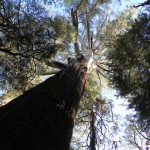-
Recent Posts
Recent Comments
- Amone B on ‘What’s in it for me?’ learners
- Zader 1 on ‘What’s in it for me?’ learners
- Zader 1 on Interviewing tips
- Amone B on Interviewing tips
- Adango on Interviewing tips
Archives
The sounds that make up the English language are:
- short -a- in and, as, after
- short -e- in pen, hen, lend
- short -i- in it, in
- short -o- in top, hop
- short -u- in under, cup
- long -a- in make, take
- long -e- in beet, feet
- long -i- in tie, lie
- long -o- in coat, toe
- long -u- (yoo) in rule
- long -oo- in few, blue
- -ur- in her, bird, and hurt
- -ar- in bark, dark
- -or- in fork, pork, stork
Then there are the 18 Consonant Sounds (sounds of the letters other than vowels), but c , q and x are missing as they are found in other sounds. The C sound is found in the k sounds and in the s sound in words like cereal, city and cent. The Q sound is found in ‘kw’ words like backwards and Kwanza. The X sound is also found in ks words like kicks.
- -b- in bed, bad, -k- in cat and kick, -d- in dog, -f- in fat, -g- in got, h- in has, -j- in job, -l- in lid, -m- in mop, -n- in not, -p- in pan, -r- in ran, -s- in sit, -t- in to, -v- in van, -w- in went, -y- in yellow, -z- in zipper
The Blends are 2 or 3 letters combined to form a distinct spelling sound. The blends sounds are:
- -bl- in blue and black
- -c- in clap and close
- -fl- in fly and flip
- -gl- in glue and glove
- -pl- in play and please
- -br- in brown and break
- -cr- in cry and crust
- -dr- in dry and drag
- -fr- in fry and freeze
- -gr- in great and grand
- -pr- in prize and prank
- -tr- in tree and try
- -sk- in skate and sky
- -sl- in slip and slap
- -sp- in spot and speed
- -st- in street and stop
- -sw- in sweet and sweater
- -spr- in spray and spring
- -str- in stripe and strap
- -ch- in chin and ouch
- -sh- in ship and push
- -th- in thing
- -th- in this
- -wh- in when
- -ng- in ring
- -nk- in rink
The Other Special Sounds including Dipthongs
- -oi- in foil and toy
- -ow- in owl and ouch
- short -oo- in took and pull
- -aw- in raw and haul
- -zh- in vision
Suggested Reading
- The Do’s and Don’ts of A Spelling Program
- Everyday Word Printables – Dolch
- Fill in the Blank Everyday Word Worksheets
Help Them Learn to Read
Dolch sight words are a list of the 220 most frequently encountered words in children’s literature and are commonly used as a teaching tool for reading, writing and spelling. The list forms a good basis of common words for children to learn between the ages of 5 and 8.
Many of the 220 words in the Dolch list, can not be “sounded out”, and must be learned by sight. Dolch excluded nouns from his main list, but did compile a separate 95-word list of nouns.
Listed in the order of frequency:
| the | down | blue | yellow | write | under |
| to | do | red | five | always | read |
| and | can | from | six | drink | why |
| he | could | good | walk | once | own |
| a | when | any | two | soon | found |
| I | did | about | or | made | wash |
| you | what | around | before | run | slow |
| it | so | want | eat | gave | hot |
| of | see | don’t | again | open | because |
| in | not | how | play | has | far |
| was | were | know | who | find | live |
| said | get | right | been | only | draw |
| his | them | put | may | us | clean |
| that | like | too | stop | three | grow |
| she | one | got | off | our | best |
| for | this | take | never | better | upon |
| on | my | where | seven | hold | these |
| they | would | every | eight | buy | sing |
| but | me | pretty | cold | funny | together |
| had | will | jump | today | warm | please |
| at | yes | green | fly | ate | thank |
| him | big | four | myself | full | wish |
| with | went | away | round | those | many |
| up | are | old | tell | done | shall |
| all | come | by | much | use | laugh |
| look | if | their | keep | fast | |
| is | now | here | give | say | |
| her | long | saw | work | light | |
| there | no | call | first | pick | |
| some | came | after | try | hurt | |
| out | ask | well | new | pull | |
| as | very | think | must | cut | |
| be | an | ran | start | kind | |
| have | over | let | black | both | |
| go | yours | help | white | sit | |
| we | its | make | ten | which | |
| am | ride | going | does | fall | |
| then | into | sleep | bring | carry | |
| little | just | brown | goes | small |
Commonly misspelt words:
accommodation, accidentally, allege, believe, changeable, definitely, embarrass, gauge, harass, heritage, hierachy, minuscule, Parliament, privilege, noticeable, mischievous, necessary, occurrence, rhythm, schedule, separate, supersede, twelfth, vacuum, weird.
Types of text
Procedural, discussion, report, recount, explanation…… what do they mean?
Text is just a different way of presenting information. We’ll look at the official ‘names’ for these in a moment.
It’s useful to note that regardless of the text-type you will usually:
- Use a new paragraph for each new point or issue
- Need a short introduction (of some type), body and short conclusion
- Keep content in chronological order
- Find that better verbs (verbs that ‘tell’ more) are the simplest way to improve text like recounts and exposition. For example, replace run with scrambled, ate with gobbled, went with walked, said with whispered, took with snatched.
(How to) Procedure text describes how to do something. It uses instructions and/or description to achieve this. Structure and grammar: It will include an aim, materials needed and the steps in order. Use action verbs (choose, press, keep, hold), a ‘command’-style language, and present tense. Examples: Instructions about how to play a game, directions, recipes.
Discussion text gives a view/different views on an topic/issue. Structure and grammar: It will include an opening statement about the topic/issue, then give different points of view and finish with a concluding summary/comment/recommendation. Use ‘being’ verbs for the argument (was, is,are) and thinking/feeling verbs (we’d like, I feel)
Exposition text states a position, an argument. It aims to persuade the reader to adopt an opinion or buy a product. Structure and grammar: It will outline the position held, in stages, then sum up. Use emotive language, present tense and a ‘certain’ tone. Examples: Ads, speeches, editorials.
Report text gives a factual description or statement about something. Structure and grammar: It will include an introduction (like a definition of what the animal is, the variety, colour) then give a sequence of facts, ending with a ’rounding-off’ type of statement. Facts are organised into paragraphs and the first sentence in each paragraph is about a new part of the topic. Includes diagrams and technical terms. Examples: Scientific texts, text books, reference books.
Recount text re-tells events in the order they happened and may be personal. Structure and grammar: It will introduce the who, where, when, then re-tell the event/s in chronological order. Usually personal comment. It will use past tense action verbs (the floodwater swept through) and thinking/feeling verbs to express personal involvement.
Explanation text tells how or why something happens – it can be a series of statements. Structure and grammar: It introduces the topic to be explained, gives step by step statements, and concludes with an overview. Here’s some more detail about how to organise explanation text:
Introduction – a general statement about the topic (a definition/a question/a brief description)
Explanation – a series of statements written in sequence – how something works or why something happens.
Eg: how something works – what it is used for, what each part does, how the parts work, how to use it or why something happens – how and why it starts, what happens next and why, what happens then, what happens finally, why?
Conclusion – summary, comment or recommendation.
Adverbs
- Adverbs modify parts of speech – such as verbs and adjectives.
- They don’t modify nouns – that’s the job of adjectives.
- Many adverbs will end with “ly”
Eg: The car was travelling slowly. (‘slowly’ modifies the verb ‘travelling’) He was violently ill. (‘violently’ modifies the adjective ‘ill’)





